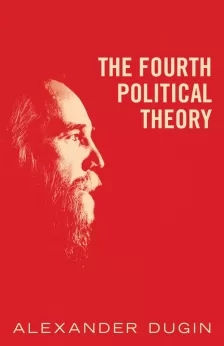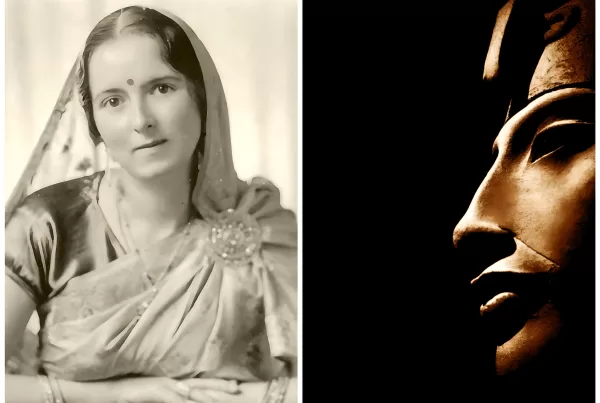Isaiah 46:8–46:13 is about the coming of Cyrus, the Moschiach of the Jews. These lines that compare the Shah of Iran and Savior of Zion to a bird of prey are particularly striking, especially considering that the Achaemenid standard was a golden eagle:
From the east I summon a bird of prey; from a far-off land, a man to fulfill my purpose. … I will grant salvation to Zion, my splendor to Israel.
Accomplished Judeo-Persian Studies scholars such as Amon Netzer have also interpreted the Servant Song at Isaiah 42:1–42:7 as a reference to Cyrus the Great. The most important passage in the Bible concerning Cyrus as the Messiah of Israel is at Isaiah 45:1–45:7:
This is what the Lord says to his anointed, to Cyrus, whose right hand I take hold of to subdue nations before him and to strip kings of their armor, to open doors before him so that gates will not be shut: ‘I will go before you and will level the mountains; I will break down gates of bronze and cut through bars of iron. I will give you the treasures of darkness, riches stored in secret places, so that you may know that I am the Lord, the God of Israel, who summons you by name. For the sake of Jacob my servant, of Israel my chosen, I summon you by name and bestow on you a title of honor, though you do not acknowledge me. I am the Lord, and there is no other; apart from me there is no God. I will strengthen you, though you have not acknowledged me, so that from the rising of the sun to the place of its setting, men may know there is none besides me. I am the Lord, and there is no other. I form the light and create darkness, I bring prosperity and create disaster; I the Lord do all these things.’
In addition to its spiritual significance, the Hebrew title Moschiach (Persian Massih) originally signified a man who is the legitimate sovereign of Israel. Such a person had to be not only a Jew, but also someone from the Davidic bloodline. Cyrus is the first person, and thereafter remains the only person ever, who is not descended from the House of David but who is recognized as a legitimate King of Israel and vice-regent of Yahweh. There is evidence that suggests that Second Isaiah and his circle of Babylonian Jews were in contact with Cyrus before the Iranian Emperor launched his invasion of Babylon. Flavius Josephus, the Jewish historian who wrote in the Roman Empire in the first century AD, claims that Cyrus listened to Second Isaiah’s writings being recited to him, and also wept in commiseration with the Jews over the treatment that they had received when Nabuchadrezzar destroyed Jerusalem and forced them into exile at Babylon. Certain passages of Second Isaiah that make reference to Cyrus and the conquest predate the actual Iranian march into Babylon. Their projections of what that seizure would look like, based on Jewish hopes for retribution against their oppressors, do not align all that well with what actually happened.
In particular, instead of humiliating adherents of the cult of Marduk, it seems that Cyrus had coordinated with them at least as closely as with the Jews and he gave the Babylonian god a level of reverence that even Nabonidus had failed to do. Instead of enslaving the people of Babylon, as Isaiah prophesied, Cyrus liberated them just as much as he liberated the Jewish exiles. Had the text been written after the fact, such discrepancies would be unlikely. Rather, the projection was probably formed on the basis of the assurances that Cyrus was giving to the circle of Isaiah in conspiratorial discussions preceding the Iranian conquest of Babylon. This further raises the question of whether, if the political propaganda in Second Isaiah was at least partly of Persian origin, the same is true of the most cosmic character of its theological content. Any estimation of the extent of the role that Cyrus, the Messiah, may have played in the formation of what we now recognize as Jewish religion must take into consideration the relationship that Cyrus had with the cult of Marduk, which was also a Semitic religion, and his having conspired with the priests of Marduk in his bloodless conquest of Babylon. Numerous passages in the Cyrus Cylinder suggest that there was a collaboration between the cult of Marduk and the forces of Cyrus that paved the way for the latter’s conquest of Babylon, including these lines:
Marduk the great lord, guardian of his people, looked with gladness upon his [Cyrus’] good deeds and upright heart. He ordered him to march to his city Babylon. He set him on the road to [Babylon], and like a companion and friend, he went at his side.
There is a striking parallel to this passage from the Cyrus Cylinder in the book of Isaiah:
The Lord’s chosen ally will carry out his purpose against Babylon. … For your [Israel’s] sake I will send [Cyrus] to Babylon. …This is what the Lord says to his anointed, to Cyrus, whose right hand I take hold of to subdue nations before him. … I will go before you. (Isaiah 48:14; 43:14; 45:1–2)
In relation to this phrase, “I will go before you,” it ought to be noted that Xenophon claimed that the rapidity of Cyrus’ military advances was owing to the fact that the army of Cyrus was guided on long night marches by “a heavenly aura” that followed them overhead and illumined the ground around them and the path forward. This is strikingly reminiscent of the account that we are given in the Biblical book of Exodus of the pillar of fire by night that, day after day, is deployed by Yahweh to guide the Israelites through the Sinai, illuminating the desert terrain around and ahead of them.
An inscription on the Babylonian Sippar Cylinder suggests that Cyrus had entered into an alliance with Nabonidus of Babylon as early as 556 BC, even before marching against Astyages and subjugating the former Median overlords of the Persians. The Sippar inscription is particularly interesting insofar as it describes Cyrus as a “little slave” of the god Marduk. It reads:
The Umman Manda of whom you are speaking, his land, and the kings who march at his side are no more! When the third year comes [553 BCE], [Marduk] will cause Cyrus, King of Anshan, his little slave, to advance against him with his small army. He will overthrow the wide extending Umman Manda; he will capture Astyages, King of the Umman Manda, and take him in bonds to his own land.
On his famous cylinder, Cyrus had this inscribed of his devotion to the Babylonian god Marduk:
When I entered Babylon in a peaceful manner, I took up my lordly residence in the royal palace amid rejoicing and happiness. Marduk, the great lord, caused the magnanimous people of Babylon to love me, and I daily attended to his worship.
The Cyrus cylinder goes on to add,
In addition, at the command of Marduk, the great lord, I settled in their habitations, in pleasing abodes, the gods of Sumer and Akkad, whom Nabonidus, to the anger of the lord of the gods, had brought into Babylon.
Cyrus conspired with the priests of Marduk in order to prepare the way for his conquest of the city. The latter had abandoned Nabonidus over his neglect of the rites proper to the cult of Marduk, especially the yearly Akitu festival. The Iranian military under the command of Oebaras, governor of Media, entered the city of Babylon on October 12, 539 BC, facing no resistance. Once the city came under the occupation of Oebaras, Median troops immediately surrounded the Marduk temple complex at Esagila and guarded it in a fashion that allowed all of the rites and festivals dedicated to the Babylonian god to continue uninterrupted. Seventeen days later, on 29 October 539 BC, Cyrus the Great himself entered Babylon. Cyrus was crowned at the Esagila temple complex. Ritual humiliation at the temple involved the king being slapped in the face repeatedly by the priests, hard enough to make him cry, and then forced down on his knees in front of a colossal golden idol of Marduk enthroned. Cyrus submitted to this ritual, before going on to make his address to the people from atop the Tower of Babel.
The Tower of Babel, called Etemenanki by locals, was seen as “the house that is the foundation between heaven and earth.” It was 300 feet on each side and 305 feet tall, with a large temple surmounting seven stages of the Ziggurat. This temple housed no idol, but it was always occupied by whatever woman of the time was considered the most beautiful and fitting woman to be the consort of Marduk. Herodotus describes the temple as it was in his own time:
The ascent to the top is on the outside, by a path which winds round all the towers. When one is about half-way up, one finds a resting-place and seats, where persons are wont to sit some time on their way to the summit. On the topmost tower there is a spacious temple, and inside the temple stands a couch of unusual size, richly adorned, with a golden table by its side. There is no statue of any kind set up in the place, nor is the chamber occupied in the night by any one but a single native woman, who as … the priests of this god affirm, is chosen … by the deity out of all the women of the land. The tallest building in the world, apart from the Great Pyramids of the Egyptians, the Jews claimed that it had been built as a platform from which the antediluvian king Nimrud intended to storm heaven and challenge God for sovereignty over the world.
Cyrus returned from Babylon to Iran as a consequence of the death of his beloved wife, Cassandane, who was entombed at Pasargadae, where Cyrus himself would later be laid to rest. Cyrus instated a period of prolonged public mourning for his departed wife. When he left, he had Cambyses crowned King of Babylon on March 27, 538 BC. Cambyses only managed to maintain this position for nine months before so offending the priests of Marduk that he was removed by Cyrus, who took back the title for himself until his own death. Supposedly, instead of submitting to the aforementioned ritual humiliation that was customary for a king being initiated at Marduk’s temple, Cambyses proudly entered the Temple of Marduk wearing splendorous Elamite robes and menacing the priests with a quiver full of arrows.
The two great deities of Babylon, its highest goddess and chief god, were Ishtar and Marduk. If Esther is Ishtar, then could it be that Mordechai is Marduk? Interestingly, the name of the chief deity of Susa was Humban, who was an Elamite god, and Haman’s ten sons are named after Elamite demons. If Cyrus had been coordinating with the Marduk cultists before he entered Babylon, was the relatively bloodless conquest of Babylon under the aegis of Cyrus the Great made possible by a conspiracy that also involved the persecuted Israelites within the city? At the very least this would have required intelligence operations, but it may also have extended to raising funds for bribes of Babylonians in high places as well as funding that afforded the Iranian military the best armaments available. Even before the Persians established the sophisticated banking system of Babylon, the Israelite exiles had gotten into the business of money changing in this hub of international trade and finance. Was Cyrus really just repaying a debt to the Israelites exiled in Babylon?
In 2 Chronicles, we have a record of Cyrus’ address to the Jews regarding his commissioned reconstruction of the Temple of Solomon at Jerusalem and the repatriation of the Jews to a homeland of “Israel” that is clearly recognized by the Shah of Iran. Second Isaiah 44:24–28 also makes reference to the edict of Cyrus that the Second Temple be built for the Jews in Jerusalem:
This is what the Lord says — your Redeemer, who formed you in the womb: I am the Lord, who has made all things, who alone stretched out the heavens, who spread out the earth by myself … who says of Jerusalem, ‘It shall be inhabited,’ of the towns of Judah, ‘They shall be built,’ and of their ruins, ‘I will restore them,’ … who says of Cyrus, ‘He is my shepherd and will accomplish all that I please; he will say of Jerusalem, “Let it be rebuilt,” and of the temple, “Let its foundation be laid.”’
One very noteworthy aspect of this passage is the cosmic character evident in the Jewish God’s boastful description of himself. Some theologians have argued that the opening of Genesis was written either during or after the period of Second Isaiah and reflects this cosmological shift under Persian influence. The priestly source, or “P,” as theologians call him, who authored this part of Genesis together with much of Leviticus, Exodus, and Numbers, was not one man, but a group of Jewish writers who continued to live in Babylon for decades after the death of Cyrus. The polarities of this material are strange in that, on the one hand, we have a more sublime and transcendent Creator god, and on the other, a litigious and even sadistic judge.
Cyrus issued his decree for the restoration of the Jerusalem Temple sometime in the winter of 539–540 BC. This decree was issued both in Aramaic, the administrative language of the Persian Empire, and also in Hebrew. Both versions are preserved in the biblical book of Ezra. The Hebrew version reads as follows:
This is what Cyrus king of Persia says: The Lord, the God of Heaven, has given me all the kingdoms of the earth and he has appointed me to build a temple for him at Jerusalem in Judah. Anyone of his people among you — may his God be with him, and let him go up to Jerusalem in Judah and build the temple of the Lord, the God of Israel, the God who is in Jerusalem. And the people of any place where survivors may now be living are to provide him with silver and gold, with goods and livestock, and with freewill offerings for the temple of God in Jerusalem.
Cyrus chose the most high-quality and expensive cedar logs from Lebanon for the construction project, and ordered that they be shipped to Jerusalem from Iran’s imperial ports in Tyre and Sidon. The temple reconstruction project was only completed in 515 BC after Darius intervened directly in order to finally get the decades-long job done. Cyrus also restored all of the gold and silver vessels that the Babylonians had looted from the Temple of Jerusalem by retrieving them from the pagan shrines in which they had been placed and returning them to the Jews who were headed back home to Israel.
Purchase Iranian Leviathan here.










